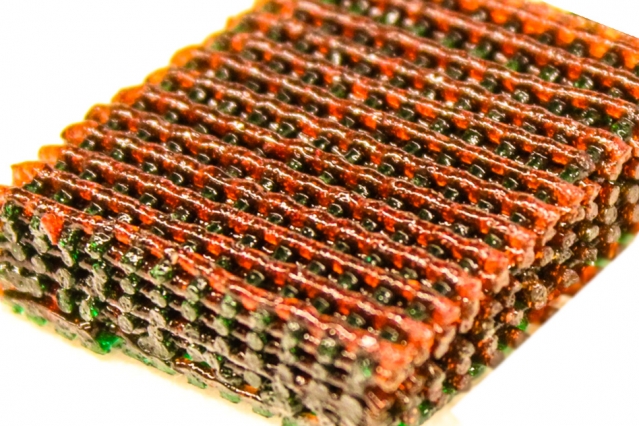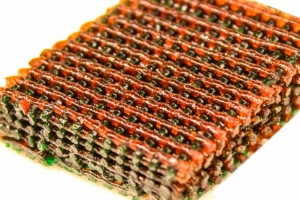Tough Hydrogel Developed for 3D Printing

Researchers have created a printable hydrogel that can be used for medical purposes, and that is highly durable and stretchable.
Latest News
June 19, 2015
Hydrogels are made of water molecules encased in rubbery polymer networks. New tough hydrogels could potentially be used to replace tissues in the human body like cartilage, but current production methods make it impossible to combine the material with living cells.
A new 3D printing technique developed at MIT can produce tough hydrogels that can encapsulate living cells and medications. The hydrogels can be printed into a wide array of structures, and are created with materials that are benign enough to synthesize with living cells like stem cells.
The process is outlined in “3D Printing of Highly Stretchable and Tough Hydrogels into Complex, Cellularized Structures” in the journal Advanced Materials.
The new material was created out of two other polymers, along with a biocompatible nanoclay that allows users to control the viscosity of the material. A printed shape can be compressed as much as 99% and then return to its original form. It can also stretch up to five times its original size.
“The innovation is really about the material — a new ink for 3D printing of biocompatible tough hydrogel,” said Xuanhe Zhao, MIT associate professor of mechanical engineering, who led the project along with colleagues at Duke and Columbia. “Each [material] individually is very weak and brittle, but once you put them together, it becomes very tough and strong. It’s like steel-reinforced concrete.”
Currently, the material can be printed with detail down to 500 micrometers, but the researchers plan to improve its resolution.
It could conceivably be used to print replacements for the cartilaginous tissues in the human ear, nose, or in the joints. The material could also be used to create durable implants to deliver new cells or drugs into the body. Another potential application: creating actuators for soft robotics systems.
Source: MIT
Subscribe to our FREE magazine, FREE email newsletters or both!
Latest News
About the Author
Brian Albright is the editorial director of Digital Engineering. Contact him at [email protected].
Follow DE





